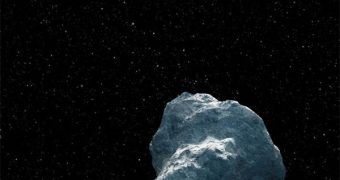A team of astronomers using the Hubble Space Telescope announce the discovery of a large cache of massive trans-Neptunian objects, space rocks that exist beyond the orbit of the gas giant.
The 14 space rocks were found as scientists were peering through archival observations that the famous telescope made over the two decades since it's been in orbit.
This type of investigations proves that there is still a lot of valid science to be conducted using Hubble, and also that the solar system is far from revealing all of its mysteries to us.
Similarly to how these 14 objects were discovered, there could be hundreds such bodies out there. Some say that even another star may exist in our solar system, but too cold to be observed using existing means, Space reports.
Astronomers say that trans-Neptunian objects include very many space rocks that reside beyond Neptune, including the dwarf planet Pluto and bodies such as Eris, Makemake, and Haumea.
They are icy rocks, that exist near the outer fringes of the solar system. The class of objects also include comets, such as the famous Halley's.
According to the research team that made the new findings, the newly-found objects are all 25 to 60 miles across (40 to 100 kilometers in diameter).
Given that they are so hard to image directly, the research team looked for the objects by peering through long-exposure images made by Hubble. These photos contain light streaks that are usually made by passing space rocks.
Over time, it could be that this method will reveal the existence of several hundreds of trans-Neptunian objects, astronomers hope. All that is required is a team with the sufficient amount of patience.
“Trans-Neptunian objects interest us because they are building blocks left over from the formation of the solar system,” explains scientist Cesar Fuentes.
The expert was the leader of the group that conducted the new investigation. The scientists are based at the Northern Arizona University.
By combining data on each of the rocks' distance, brightness and reflectivity, the team was able to estimate the size each of the 14 celestial bodies had.
“We have proven our ability to detect and characterize TNOs even with data intended for completely different purposes,” Fuentes goes on to say.
The new data will be detailed in an upcoming issue of the esteemed Astrophysical Journal.

 14 DAY TRIAL //
14 DAY TRIAL //